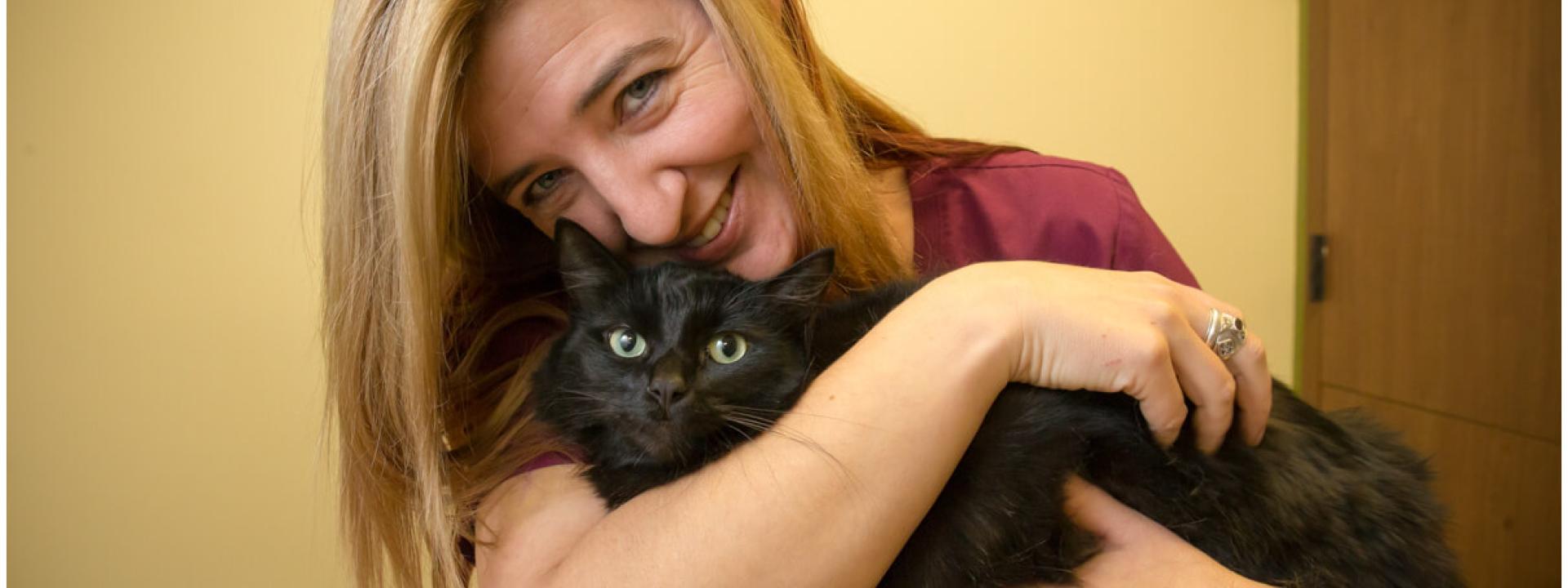Baby, it’s getting cold outside! As you fire up the furnace and dig the sweaters out of the back of the closet, remember that your pet needs special care during the winter months, too. Follow these five tips to keep your pet safe and warm all season long.
Dress for the Weather
Yes, technically, your pet already has a coat; however, that doesn’t mean he doesn’t need additional protection from the cold. Small, short-haired, and short-legged breeds may need a jacket or sweater to help ward off the winter chill. Young, old, and sick pets should also wear an extra layer as they may not be able to regulate their body temperature effectively.
Additionally, winter walks can wreak havoc on your pet’s paws. Protective booties and balms can keep paw pads safe from ice, salt, and other harmful chemicals, but you should always be sure to wipe your pet’s feet and fur thoroughly with a clean, dry towel before coming back inside.
Not sure how cold is too cold? Watch for these signs your pet needs to bundle up:
- Shivering
- Hunching or curling up
- Moving slowly
- Lifting paws off the ground
- Whining
- Seeking shelter
Beware of Chemicals
Winter is beautiful—but don’t forget, that freshly fallen snow on your sidewalk or driveway may soon be covered in salt, ice melt, or other toxic chemicals, like antifreeze. Be sure to clean up any spills or leaks immediately, keep containers securely closed and out of reach, use protective booties during walks, and give your pet a thorough wipe-down after a trip outdoors to prevent him from licking any harmful substances off his fur or paws.
Keep Him Comfortable
 Just like in humans, the onset of colder weather can make some medical conditions, like arthritis, worse. Keep time outdoors to a minimum and make sure your pet has plenty of places to get cozy away from drafty windows or doors and off the floor (but not too high or difficult to access). Try moving your pet’s bed to a sunny area of the house or adding a few extra blankets as well.
Just like in humans, the onset of colder weather can make some medical conditions, like arthritis, worse. Keep time outdoors to a minimum and make sure your pet has plenty of places to get cozy away from drafty windows or doors and off the floor (but not too high or difficult to access). Try moving your pet’s bed to a sunny area of the house or adding a few extra blankets as well.
If your pet hasn’t been diagnosed with arthritis or other joint issues, but is showing signs such as limping, stiffness, reluctance to climb or jump, repeated licking over a joint, or changes in personality, particularly during cold weather, schedule an appointment with your veterinarian.
Watch Out for Strays
Stray and feral cats will often seek shelter in the wheel wells of cars to keep warm overnight, but can be severely injured or killed when the engine starts. To prevent this, always bang loudly on the hood or honk the horn before starting your car during the winter months.
Keep Him Inside
The best way to protect your pet from the elements is to keep him inside as much as possible, especially if the temperature is below freezing. Keep in mind that leaving your pet in a car is just as dangerous in winter as it is in summer. Parked cars cool down rapidly and hold in the cold like a refrigerator, putting your pet at risk for hypothermia, frostbite, and even death. Remember, if it’s too cold for you, it’s too cold for your pet!
Need help getting your pets prepared for winter? Contact us or schedule an appointment today!

